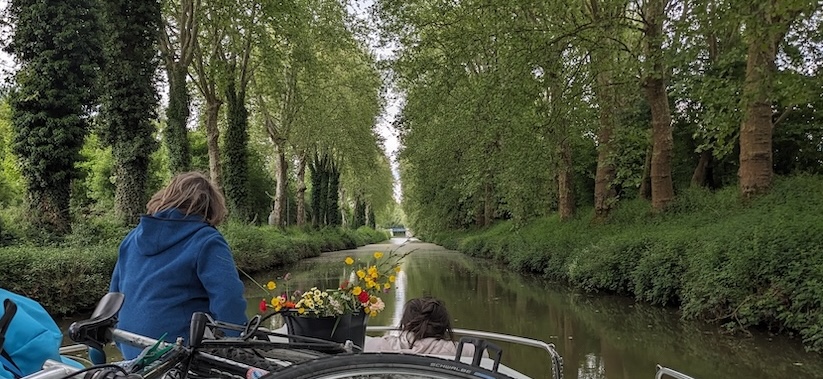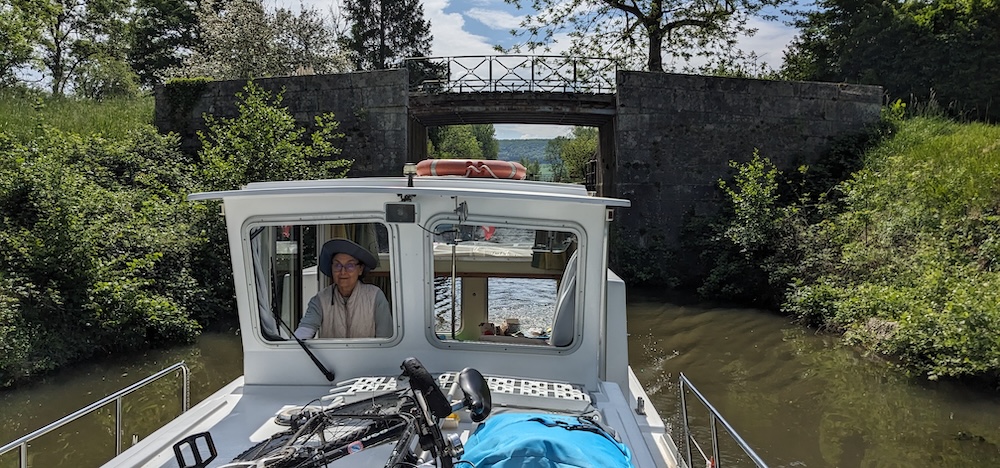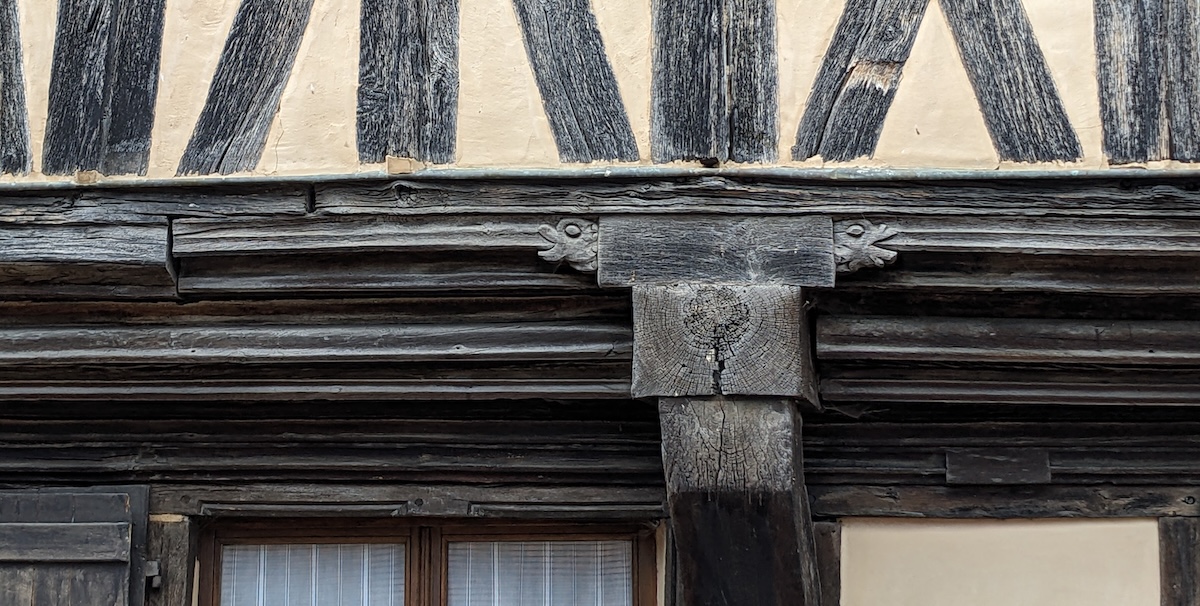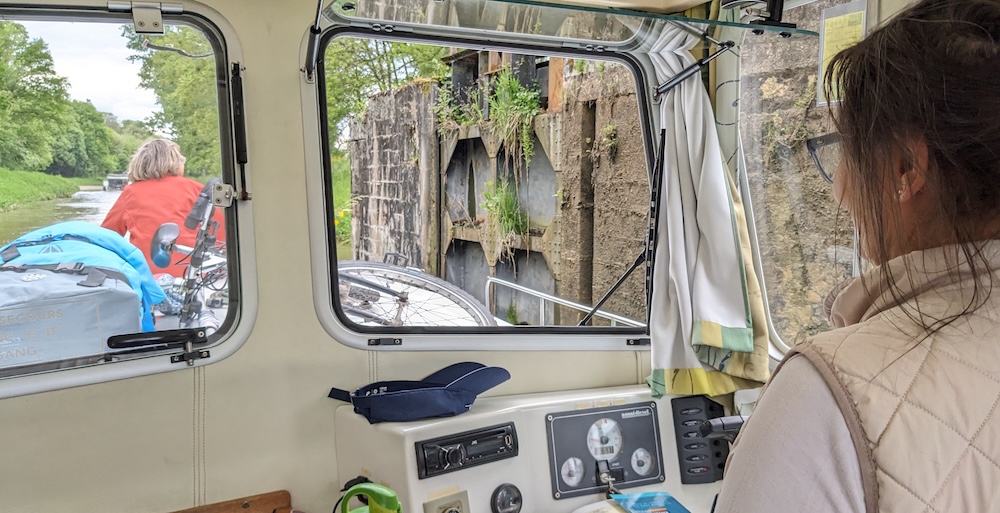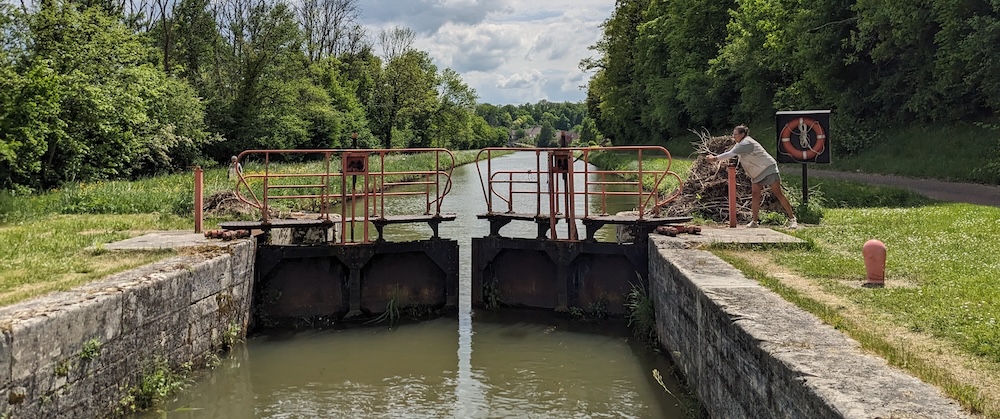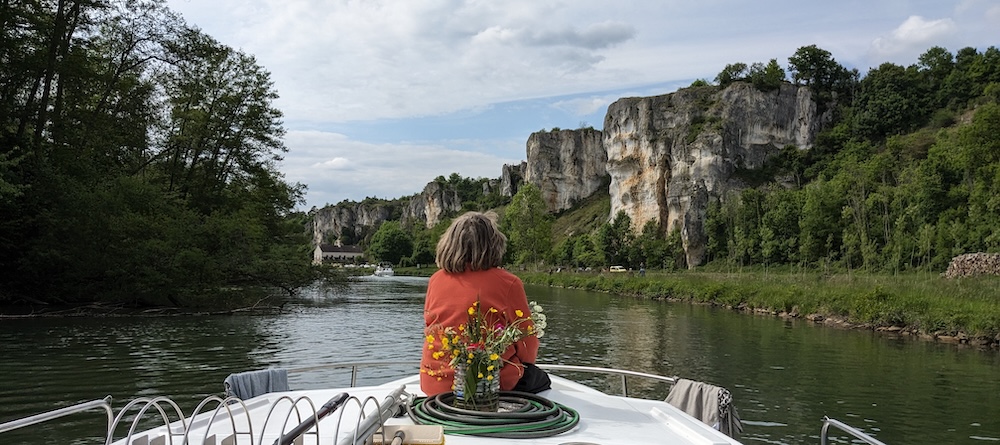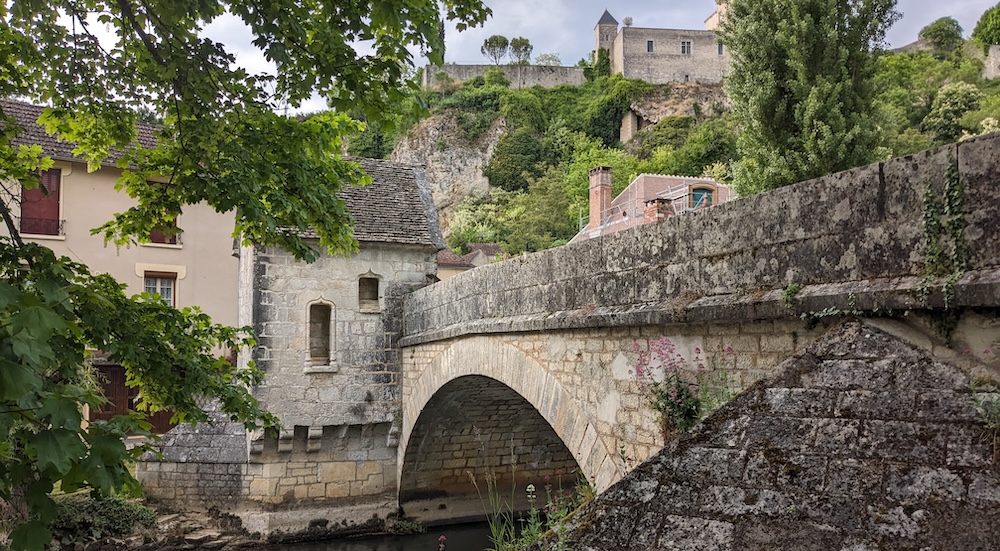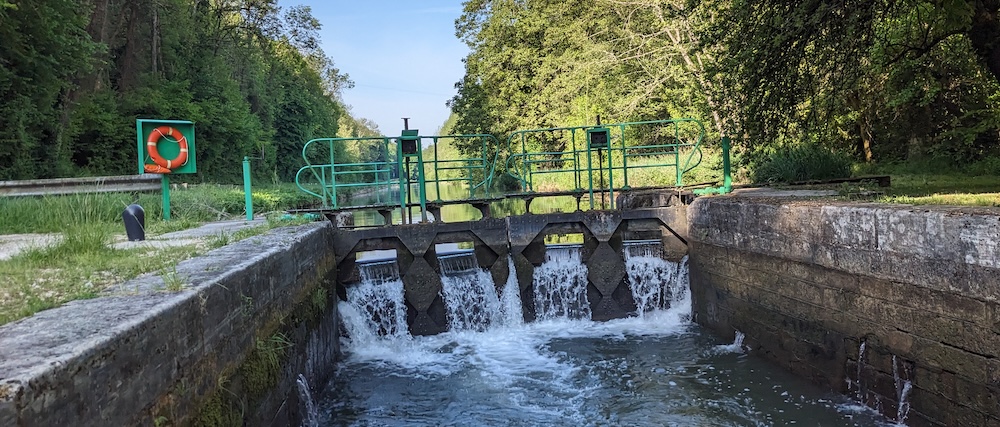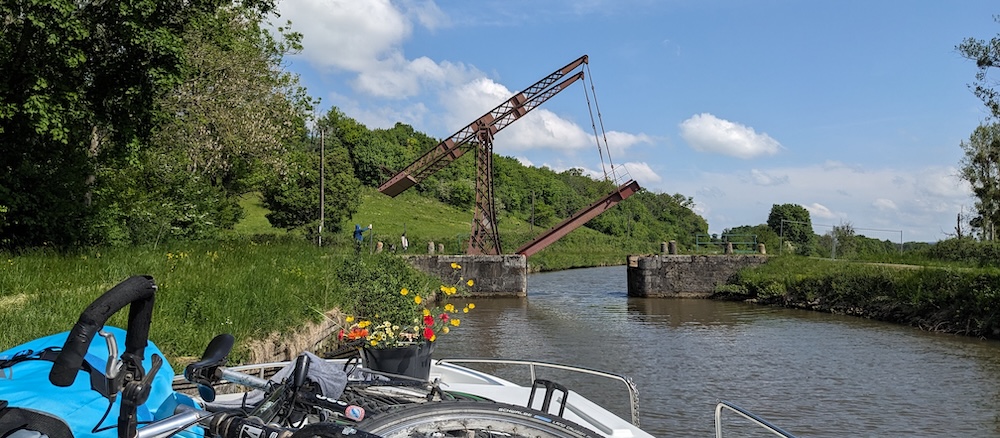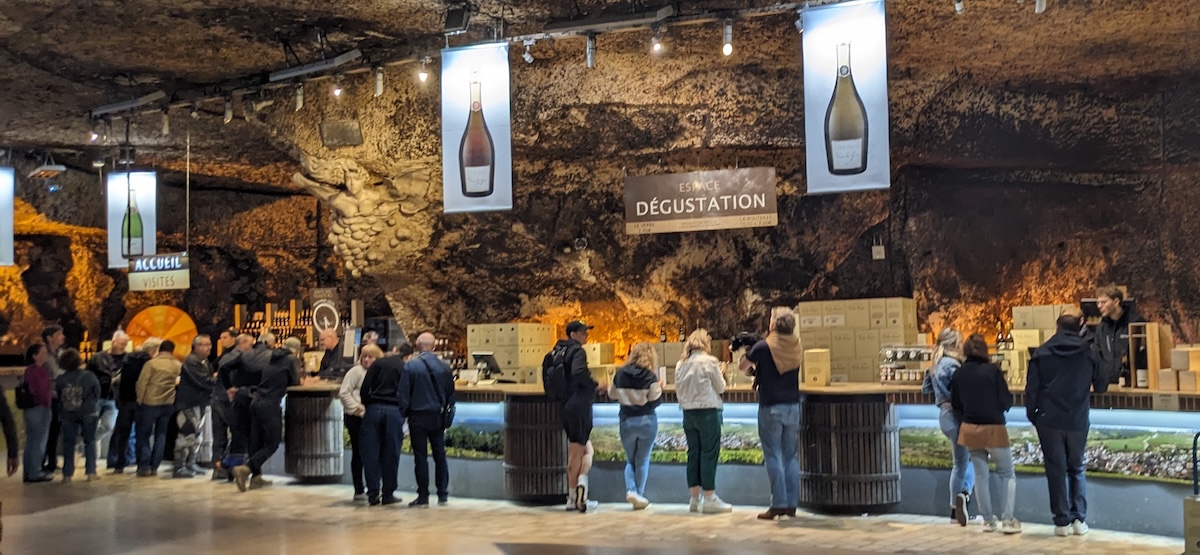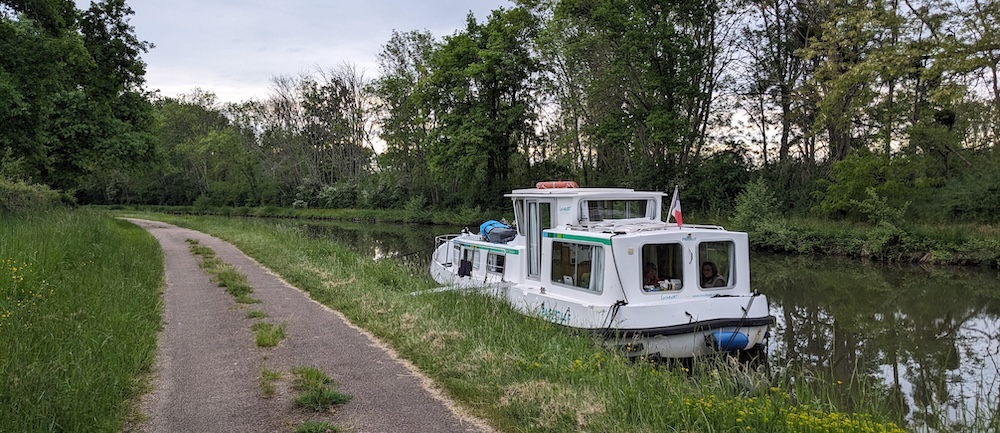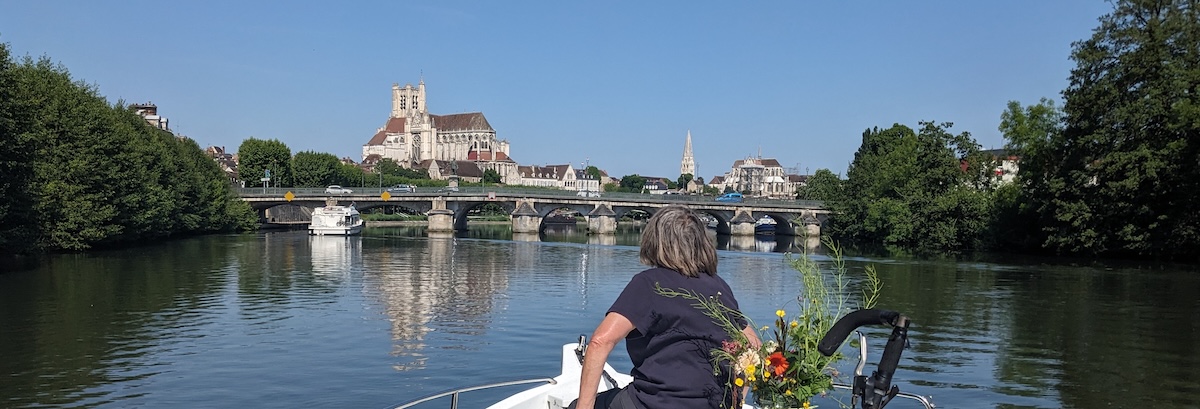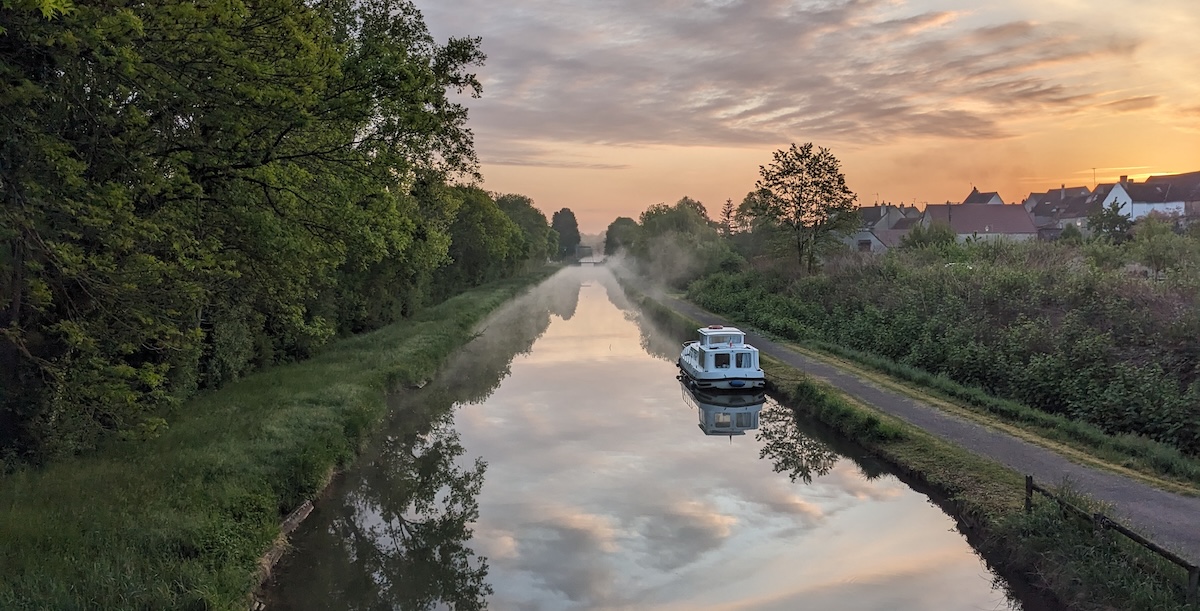Canal boating may be the ultimate form of laid-back “slow travel,” in which you cruise past beautiful scenery at a jogging pace without having to pack and move to new accommodations along the way. It’s also one of the most accessible forms of boating, since most charter companies don’t require any boating experience. Best of all, canal boating offers a sense of wonder, that What will we discover around the next corner? feeling that’s hard to achieve along the beaten path of more convenional forms of travel — especially when that discovery could be a boulangerie, vineyard, or impressive chateau! I dreamed of doing a canal boat trip for years, and now that I have, I’m dreaming of another one. Enough said?
While this post is based on a week-long trip on Burgundy’s Canal du Nivernais, most of the information is geared toward canal boating in general, so it should be applicable to most destinations. The big two rental operations across Europe are Locaboat and Le Boat. We went with Locaboat primarily due to their early bird deal (more on that below).
Is canal boating expensive?
It certainly can be, especially in peak season. However, we were able to clinch a great deal by traveling in the low season and using Locaboat’s 40% early bird booking discount (booking before October 31 for the following spring/summer season). Together, those factors made our 7 day/one-way trip on a small, three-person “Penichette” come in at the fantastic price of just under $1500.
We also kept our expenses low by boondocking every night — ie. tying up to the bank in a quiet area, which is permitted along 99% of the canal. The boat came with giant stakes and a sledgehammer to pound them in with, and we enjoyed incredibly quiet, private locations each time we did so. Ask around at charter companies if this appeals to you — or, conversely, ask about the availabilty of docks, marinas, and other infrastructure along the way. Be warned, however: “marina” is a relative term in rural France! Most are little more than a strip of side-to docking, some with water and power available for free or through an online payment using the QR code provided.
You can also economize by preparing meals in your boat’s galley. We found the cooking facilities on our 9.3m/30 foot “Penichette Classic” perfectly adequate for three. A good thing, too, since our cruising area area did not offer many places to eat out! If you follow French news, you’ll know that the “desertification” of small provincial towns is a huge issue, with businesses closing, public services declining, and a pattern of migration to big cities. This is probably not an issue along the most popular routes like the Canal du Midi, however. Your best bet is to check with charter bases to get a sense of what to expect and provision accordingly.
Do you need boating experience?
Most canal boating charter companies do not require boating experience, a good indicator that not much is likely to go wrong, even with the most clueless skipper behind the wheel. We witnessed several who, er… seemed to thoroughly enjoy their time afloat in blissful ignorance. There’s a good reason why canal boats come armed with thick rings of rubber that make them look a little like bumper cars! Then again, tight quarters prety much guarantee the occasional bump, even with an experienced hand at the wheel.
Still, having some boat handling experience (or at the very least, a little textbook knowledge) will put you more at ease and help avoid problems. The charter company will brief you in boat handling and boat systems. I recommend keeping three points in mind…
(1) The boat moves, but so does the water, so don’t assume a one-to-one match between your maneuvers and the resulting outcome. Use the first wide, empty patch of canal you find to get a feel for this.
(2) Boat don’t reverse the way cars do. This has to do with hull shape and the fact that the propeller doesn’t push water over the rudder in reverse. Again, practice in a wide, quiet area to get a feel for how much control (or lack thereof) to expect.
(3) The single greatest danger in canal boating is probably posed by lines (ie ropes), especially in locks and when tying up. A slack line can get loaded with tremendous forces very quickly, so be very careful when handling lines. Always put a wrap around a cleat or bollard when handling lines, keep your fingers well clear, and make sure lines run unobstructed. I had to shout out to a boat behind me in one lock because they had their bow (front) line running across the deck from left to right — directly over the legs of two little girls sitting there! The moment that line became loaded, it would have squeezed against the girls’ legs. Very dangerous! A line rigged to the lock side of the boat would eliminate such dangers. Always consider the lay of your lines and keep them tidy so they don’t tangle or trip you.
When entering a tight lock with limited space ahead, the first line you rig should be a spring line aft to act as a brake. If you don’t know what a spring line is, watch this and this!
Planning your trip
My number one piece of advice in planning a canal boat trip is to pay an additional fee for a one-way charter. There’s not much sense in taking a round trip due to the slow pace of a canal boat. This fee will be lowest in an area where the charter company has several bases or where there are enough branches of canal to allow a loop trip if time permits. We paid €200 for a one-way option in the Canal du Nivernais, where Locaboat has three bases, each about a week apart.
The distance you cover per day is dictated not only by speed but also by the number of locks (and possibly lifting bridges) and their opening times. More on these in a separate section below.
The size of the canals and locks will also influence the flavor of your trip. Over the first two-thirds of our downstream trip from Corbigny to Joigny on the Canal du Nivernais, we passed through a quiet, rural area with tiny villages, and the narrow canalway was always flanked by bike paths and greenery. The locks were equally small, only fitting two to three boats with a maximum width of about 5.5m. These quaint locks are operated by hand-cranking, usually by a resident lock keeper who is happy to chat and let you pitch in. Over the final third of our route, the canals were much bigger, industrial-feeling affairs operated by the press of a few controls. We still enjoyed that part of the trip, but I will certainly look at lock size when considering a future trip.
Finally, consider the accessibility and popularity of each destination. The Canal du Midi is probably Europe’s most famous canal-boating destination in Europe and will consequently be busier. This can be a plus in terms of meeting fellow travellers and having more amenities along the way or a minus when “busy” turns into “crowded.” We chose the Canal du Nivernais because it was closer to Paris and Dijon (easy points to connect in and out of) and because we hoped it would be pleasantly quiet — which it was at the time of our visit in early May. We loved the scenery and exploring small, quiet towns untouched by tourism.
Locks and lifting bridges
During our one-week trip, we covered 128km/80mi, passing through 62 locks and several lifting bridges. Neither locks nor bridges pose a great challenge, but they take time. Consider two boats squeezing into a small lock together, both going downstream. The lock gates are cranked shut, water level slowly drops to that of the lower section of the canal, the front gates are cranked open, and you’re off — a process of about 15-25 minutes. If a boat traveling in the opposite direction happens to come along just then, they can motor into the lock and repeat the procedure. But if you were the third boat heading downstream and couldn’t fit in the lock with the first two, you would have a longer wait, because the lock keeper will need to close the gates and slowly raise the water level in the lock before you can enter.
Most lock keepers we met communicated with us and each other, so we rarely had to wait at a lock. However, one lock keeper hit a backlog at one point, so we had to wait 30 minutes before we could enter the lock and begin the “lowering” procedure. This isn’t a big issue, just a point to keep in mind when calculating how far you hope to travel by lunch or the end of the day.
Another factor to consider are lock opening times. In the Canal du Nivernais, locks open at 9am and close at 7pm, with a one-hour lunch break at noon, and they are spaced fairly closely. So, you will find yourself stopping and starting according to their schedule, not yours. If you hope to make a lunch break in a particular place along your day’s route, plan ahead to avoid getting “caught” behind a lock at noon.
Lifting bridges are less of an obstacle but still take time because you need to get someone ashore to press the button, which makes the bridge lift v-e-r-y s-l-o-w-l-y. After you pass through, you’ll again have to keep the button pressed for the bridge to lower e-q-u-a-l-l-y s-l-o-w-l-y, then get your crew member back aboard. A fun, practical solution is letting a crewmember pedal ahead on the bike path built beside the canal. They can operate the bridge by the time you get there, then catch up with the “mother ship” at the next lock.
What to do and see
Watching the scenery pass from the canal is its own form of entertainment. Active travellers should pack good walking shoes and bring/rent a bicycle to explore farther away from the canal. Canals and rivers are generally at the lowest point of a valley, so a bike will get you to the nearest hilltop for sweeping views of a wider area (or to the nearest wine tasting cave). Stand-up paddleboards are another fun option, though they don’t necessarily bring you to new scenery.
Super secret insider tips for canal boating
Just kidding — these are not super secret BUT I’ve never found the following points mentioned in any resources I scanned before my trip, so they should prove helpful:
Number one: rental boats only come with one key, so bring a lock box if you are sharing the boat with several people. A small point, but an important one for freedom and crew harmony!
Second, when choosing a boat, consider deck space. Boats with especially generous indoor space and rooftop seating may have very limited deck areas for linehandling, often without guardrails. This could be a factor if you rely on a smaller or less nimble crew when it comes to docking or handling lock lines. Our Penichette wasn’t the most modern boat in the rental fleet, but it did have good-sized side decks with guard/hand rails, which our 55-to-80-year-old crew members were happy to have.
Next, research whether you’ll be travelling up or downstream. Current isn’t much of a factor in canals, but going downstream can be slightly adventageous because you’ll be high up when entering locks, so getting lines around the bollards (tie-up points) there is easy. Boats heading upstream will enter a lock at a very low level with sheer walls looming on both sides and the bollards way up high and potentially out of sight. This isn’t insurmountably difficult but beginners or short-handed crews will appreciate the more straightforward downstream procedure.
Canal boats are a lot like campers, with finite stores of water and power. We were conscientious about water use and only topped up the tank once in the middle of the week we spent aboard. Topping up more often would have proven tricky in the off-season because the few municipal docks along our route hadn’t yet turned on the taps/power sockets. So, it pays to be conscious of water and power use in your time aboard.
Finally, bigger isn’t always better when it comes to choosing a boat to rent — not just because of the deck space issue noted above but also due to maneuverability. Canals can get really narrow in places, so we were happy to have a little breathing room when passing under bridges or entering locks in our petite Penichette with its modest 3.1m beam (width). Larger boats might come with bow thrusters to make maneuvering easier, but this feature is not really necessary if you have a little experience.
Resources
- Guardian article: “Canal and river boat holidays in Europe: readers’ travel tips”
- blog post “Self-Drive Boating on the French Canals”
- Guardian article: “Readers’ tips for the perfect canal boat holiday”
- Route calculator for French canals with distances, number of locks, time estimates, etc.
So, there you are — all my tips and lessons learned from a very enjoyable canal boat trip! (Note: details and prices in this post date to May 2025.) I hope you have found this post useful and that you can put it to good use in planning your own canal boating vacation. For other exciting trips and ideas, click on “HOME” at the top of the page. Thank you for visiting TheTravelBug.blog and happy travels!
